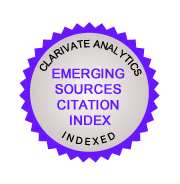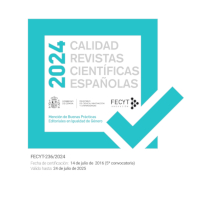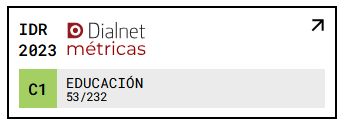Espacios, experiencia de ocio y participación de la juventud: contribución a los modelos de gestión e intervención a partir del análisis de buenas prácticas
DOI:
https://doi.org/10.18172/con.2776Palabras clave:
Buenas prácticas, juventud, participación juvenil, ocio, espacio, modelo de gestiónResumen
Se entiende la juventud como un proceso de experimentación en el cual se generan las bases sobre las cuales se sustentará, en buena medida, la vida adulta. En este sentido, el ocio se presenta como un escenario idóneo para la experimentación, principalmente por la libertad en la elección del mismo. En este texto se realiza un análisis de experiencias y proyectos que pueden ser consideradas como buenas prácticas en el contexto comunitario, tanto desde el punto de vista de las actividades y prácticas de ocio que se realizan, como desde el punto de vista de los diferentes modelos de gestión e intervención. En el análisis se investigan principalmente los diferentes modelos de participación de la juventud en el diseño y gobernanza del ocio y cómo este aspecto contribuye al desarrollo personal y social del propio joven. Además, también se analiza cómo este aspecto puede favorecer el desarrollo de una serie de actitudes y competencias para la participación social, política y cultural en su barrio, municipio o comarca. En general, se puede concluir que a una mayor implicación del joven en el diseño y gestión de la oferta comunitaria de ocio, mejor es la experiencia de dicha actividad y el grado de compromiso y participación en el programa o servicio.
Descargas
Citas
Ahedo, R., Valdemoros, M. A., Escolar, M., Melendro, M., Serrat, N. y Pose, H. (2014). El valor de las buenas prácticas en la investigación en red. En G. Pérez y A. De-Juanas (Eds.), Educación y jóvenes en tiempos de cambio (pp. 219-226). Madrid: UNED.
Aristóteles (1970). Ética a Nicómaco. Traducido por M. Araujo y J. Marías. Madrid: Instituto de Estudios Políticos.
Berrio-Otxoa, K., Hernández, J. M. y Martínez, Z. (2002). Los adolescentes y el tiempo libre: mirando al futuro. 2001-2002. Universidad del País Vasco.
Caride, J. A. (2012). Lo que el tiempo educa: el ocio como construcción pedagógica y social. ARBOR. Ciencia, Pensamiento y Cultura; 188, 301-313.
Caride, J. A., Fraguela, R. y Varela, A. (2014). Investigación en Red: los tiempos educativos y sociales, en clave de ocio y desarrollo humano. Investigación. Cultura, Ciencia y Tecnología (Instituto de Cultura, Ciencia y Tecnología, 6(11), 14-22.
Cuenca, M. (2000). Ocio humanista. Documentos de Estudios de Ocio, 16. Bilbao: Universidad de Deusto.
Cuenca, M. (2014). Ocio valioso. Documentos de Estudios de Ocio, 52. Bilbao: Universidad de Deusto.
Doistua, J., Cuenca, M. y Ortega, C. (2014). Prácticas y experiencia de ocio en los jóvenes de la Comunidad Autónoma de Euskadi. En G. Pérez y A. De-Juanas (Eds.) (2014), Educación y jóvenes en tiempos de cambio (pp. 375-386). Madrid: UNED.
Gil Calvo, E. (2005). El envejecimiento de la juventud. Revista Estudios de Juventud, 71, 9-11.
González-Monteagudo, J. (2000). El paradigma interpretativo en la investigación social y educativa: nuevas respuestas para viejos interrogantes. Cuestiones pedagógicas: Revista de ciencias de la educación, 15, 227-246.
López, J. A. (2010). Ocio, consumo y medios de comunicación. En J. González-Anleo y P. González (Dir./Coord.), Jóvenes españoles 2010 (pp. 229-298). Madrid: Fundación SM.
Ortega, C., Lazcano, I. y Manuel, M. (2015). Espacios de ocio para jóvenes, de la monitorización a la autogestión. Pedagogía Social. Revista Interuniversitaria, 25, 69-8.
Rodríguez, E., Megías, I. y Sánchez, E. (2002). Jóvenes y relaciones grupales. Madrid: Obra Social de Caja Madrid.
Tejerina, B., Carbajo, D. y Martínez, M. (2012). El fenómeno de las lonjas juveniles. Nuevos espacios de ocio y sociabilidad en Vitoria-Gasteiz. Informes del CEIC, 004.
Descargas
Publicado
Cómo citar
Número
Sección
Licencia
El autor o autora conserva todos los derechos sobre su artículo y cede a la revista el derecho de la primera publicación, no siendo necesaria la autorización de la revista para su difusión una vez publicado. Una vez publicada la versión del editor el autor está obligado a hacer referencia a ella en las versiones archivadas en los repositorios personales o institucionales.
El artículo se publicará con una licencia Creative Commons de Atribución, que permite a terceros utilizar lo publicado siempre que se mencione la autoría del trabajo y la primera publicación en esta revista.
Se recomienda a los autores/as el archivo de la versión de editor en repositorios institucionales.













